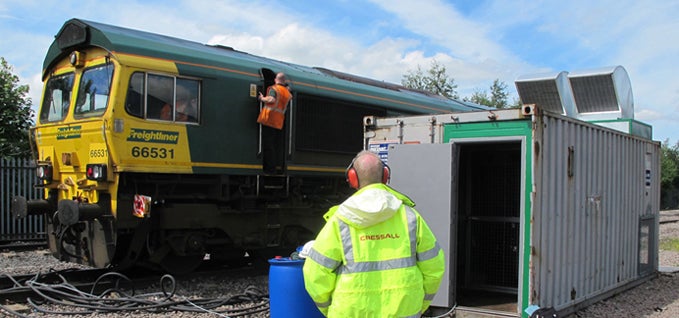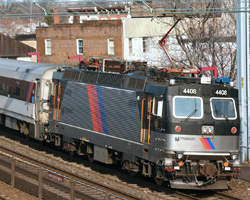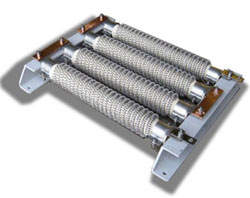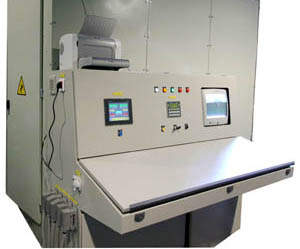
Cressall Resistors supplies lightweight, compact and easy-to-maintain resistors for railway traction systems.
The company’s solutions have been used in transportation applications for more than sixty years. Its engineers use state-of-the-art 3D modelling and thermal simulation software to develop resistors.
Cressall evaluates the complete run-cycle of its resistors in a testing laboratory equipped with a 2t capacity, a three-axis vibration table, a controlled 1.5MW power source, and monitoring equipment.
Resistors for dynamic braking systems
Cressall provides resistors for regenerative brake systems, which feed power generated by traction motors back into railway lines when trains stop at stations.
When no other trains on the track are available to use the regenerated power, it is dissipated into brake resistors mounted on the trains themselves, or at fixed track-side locations.
Cressall’s mesh resistors are convection-cooled and dissipate large amounts of power into a compact space, making them ideal for regenerative power systems.
The company supplies resistors for rheostatic braking systems, which are non-wearing and independent of external network conditions.
Hard and soft crowbar resistors
Cressall supplies hard and soft crowbar resistors, which mitigate the effects of high voltage in traction power supply circuits.
The soft crowbar is activated to dissipate transient over-voltages. If these persist at the same level, the main breakers are opened to short-circuit the system through the hard crowbar, which absorbs the stored energy.
Replacement traction resistor parts
Cressall has extensively recorded the railway resistors it has supplied from the 1960’s onwards for electric and diesel electric locomotives, electric multiple units (EMU) and metro cars.
The company designs replacements for original equipment designs that are no longer available or manufactured, and tests them to ensure they meet the same electrical, thermal and vibration standards.
Resistor technologies still being manufactured by Cressalls include the Eurostyle and Service grids, Cressall ‘Expamet’ expanded mesh, and zirconium oxide (ZO) coils, and GEC ‘RP’ B-type and D-type coils.
Capacitor charge / discharge resistors
Current solid-state traction systems use capacitor / inductor filter circuits to prevent surges and unwanted harmonics from entering traction power supplies.
Cressall’s resistors are used in these filter circuits to limit inrush currents to the capacitors while charging, and also discharge them safely when required.
Snubber resistors
Chopper and gate turn-off (GTO) thyristor drives can generate very high back electromotive force (EMF) across various solid state components when power is switched to the traction motors.
Cressall’s expanded mesh resistors are suitable for parallel resistor / capacitor circuits, which dissipate potentially damaging voltages across train systems.
Resistors consist of banks of components, supplied as self-contained enclosures or in mountable equipment cases. They are constructed from high-grade stainless steel alloys with ceramic and mica insulators, and are suitable for adverse environments.
Cressall’s expanded mesh resistors meet IEC60322 thermal shock requirements, and are specialised at keeping heat out of mountings, terminations and supporting insulators.
Compact designs for natural and forced air cooling are also available.
Load banks for train testing
Cressall supplies purpose-built load banks for testing the engines and generators of diesel electric locomotives, up to a 4,000hp rating.
The load banks provides 20 motorised and programmable logic controller (PLC) off-load switches, allowing tests to be carried out across the entire power range.
The banks also feature twin fan-cooled resistor ducts, two main load-isolating contactors, and an integrated off-load switch panel permitting the selection of more than 200 resistance values between 0.026Ohm and 3.3Ohm.





